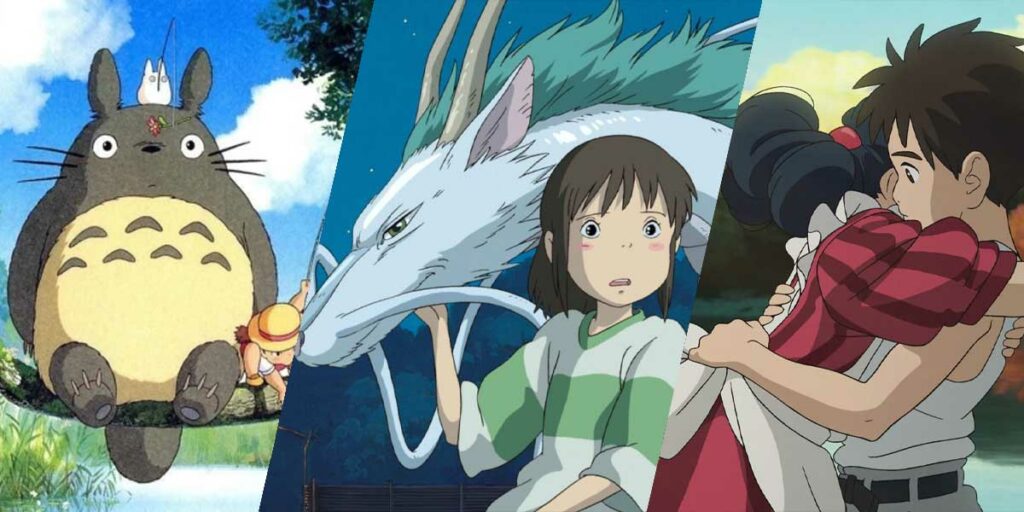We delve into Hayao Miyazaki’s filmography and list all the films from the Japanese director, animator, and Studio Ghibli co-founder, ranked from worst to best.
Embarking on a journey through the enchanting realm of Hayao Miyazaki’s films reveals a rich tapestry of imagination and storytelling. As one of the co-founders of the iconic Studio Ghibli, Miyazaki has solidified his status as a master storyteller, renowned for his exploration of rich themes encompassing feminism, environmentalism, and anti-war sentiments. In this ranked list, I delve into his diverse body of work, organizing them from worst to best into a personal ranking that spans from the films that might be considered his least impressive (though still undeniably good) to his absolute best, unveiling the depth of his cinematic legacy.
12. Howl’s Moving Castle
Controversially placed at the bottom of a Miyazaki ranked list, Howl’s Moving Castle remains a significant favorite among Studio Ghibli fans. However, I personally find it to be bloated, confusing, and slightly problematic. The story revolves around Sophie (Chieko Baishō), a young woman who is cursed by a wicked witch and transformed into an elderly woman. To break the curse, Sophie seeks refuge in a magical moving castle owned by the enigmatic wizard Howl (Takuya Kimura). As Sophie navigates the complexities of the magical world and the ongoing war, she develops a unique bond with Howl and his eclectic companions.
Despite the film’s sincere anti-war message, the abundance of subplots overwhelms the main narrative, hindering its impact. The portrayal of love between Howl and Sophie feels insincere, there’s a subplot in which the witch returns to the castle that raises concerns, and the ending appears to come out of nowhere. While I appreciate that fans can find enjoyment in this movie, for me, it doesn’t rank as Miyazaki’s best.
11. Lupin III: The Castle of Cagliostro

The Castle of Cagliostro marks Miyazaki’s debut as a filmmaker and is his only film apart from Nausicaä not produced by Studio Ghibli (although Nausicaä is often considered the birth of the studio). The film follows the daring adventures of master thief Lupin III (Yasuo Yamada) and his partner Jigen Kiyoshi Kabayashi) as they uncover a counterfeit money scheme in the small European country of Cagliostro, blending action, comedy, and romance in a classic caper. It is both stylistically and tonally unique from any of his other work, though not necessarily for the best. Lacking the thought-provoking themes Miyazaki is known for, it falls short in providing the integral fun found in most of his other lighthearted pieces. The plot is messy, making it challenging to keep track of the narrative, and following the characters through their journey feels laborious. Fortunately, this film hasn’t been immortalized in the Studio Ghibli lineup, sparing the studio’s credibility. It seems Miyazaki learned for the better from this debut!
10. The Wind Rises
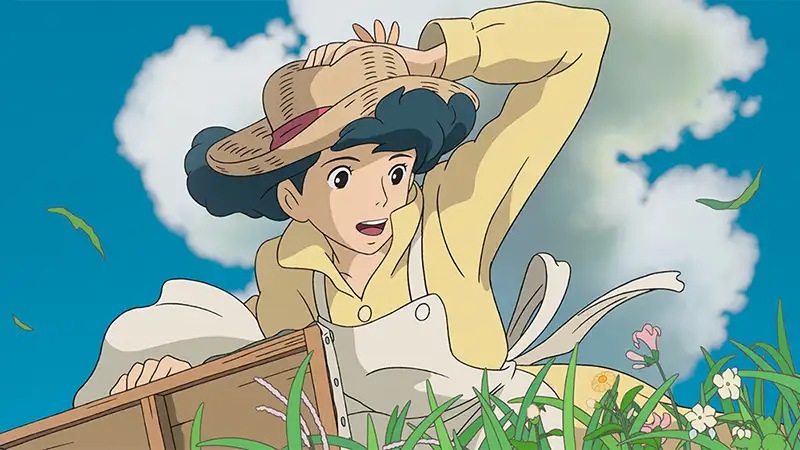
Another well-received work by Miyazaki and his most recent one until the release of The Boy and the Heron, this film was intended to serve as his proper send-off and retirement from filmmaking. The movie is a fictionalized biography of Jiro Horikoshi (Hideaki Anno), an infamous airplane designer during World War II. Despite his passion for aviation and engineering, Jiro faces moral dilemmas as his creations are ultimately used for war. The film also chooses to explore some of Jiro’s personal life, with the latter half of the movie focusing more on the relationship he pursues with a young woman. It delves into themes Miyazaki has grappled with throughout his life, such as purpose, legacy, happiness, and romance. While I find the film visually stunning, unfortunately, the themes felt disjointed to me. It comprises almost two separate storylines, creating the impression of two entirely distinct films. Consequently, it becomes challenging to fully grasp Miyazaki’s intended message. The film feels disconnected, making it a struggle for me to see it through to the end.
9. Nausicaä of the Valley of the Wind
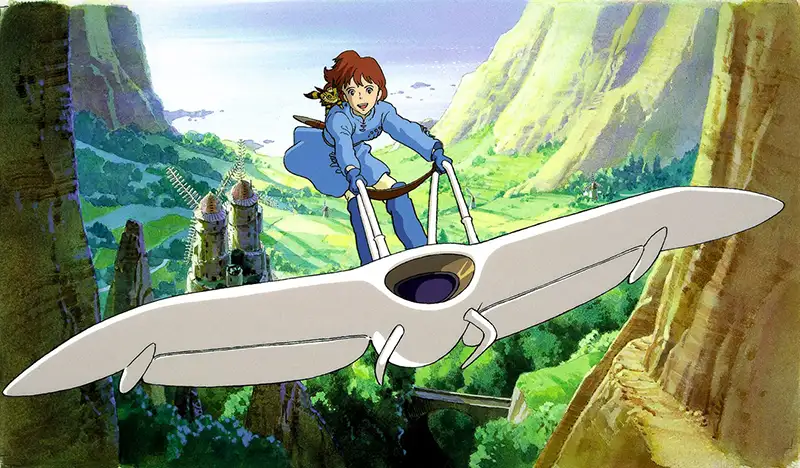
Miyazaki remains steadfast in one aspect of his filmmaking: his choice of themes. Environmentalism frequently takes center stage, underscoring its profound significance to him. In his quasi-Studio Ghibli debut, he delves deeply into this theme. The narrative follows the journey of Princess Nausicaä (Sumi Shimamoto) in a post-apocalyptic world, as she strives to bring harmony between nature and humanity amid environmental and political challenges. Nausicaä undeniably catapulted Studio Ghibli into the realm of serious studios (although technically not a studio at the film’s release). However, while it excels in thematic elements, it grapples with storytelling. Despite my admiration for the film’s concept, I found it somewhat lethargic overall.
Nausicaä is undeniably the blueprint for the stronger female characters that Miyazaki would be known for in his later films. However, in this early endeavor of his career, she doesn’t feel fully fleshed out and comes across as middling at best. While environmentalism is certainly one of the film’s stronger aspects, the lack of establishment of other robust ideas can make it feel somewhat repetitive in the message it’s trying to convey. Despite its attempts, and in some ways, successes in the depth of the story it’s trying to tell, its overall deficiencies in other departments make it difficult to fully connect with.
8. Castle in the Sky
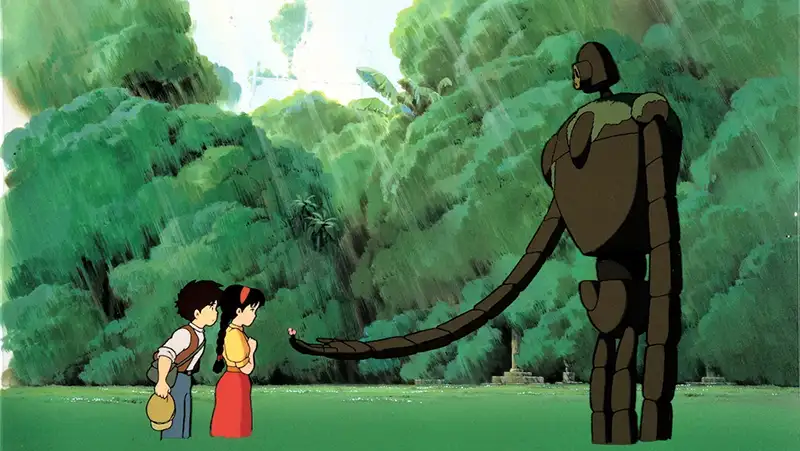
I regretfully positioned another fan favorite lower on the list. As technically the first Studio Ghibli movie, Castle in the Sky focuses on a young orphan named Pazu (Mayumi Tanaka), who encounters a mysterious floating girl, Sheeta (Keiko Yokozawa), along with her crystal necklace. While being pursued by the government and pirates, they try to uncover the mystery of Laputa, a mythical castle flying in the sky.
The intrigue of Laputa’s mystery and the youthful love story surrounding the main characters undoubtedly adds depth to this film. However, once the mystery is unraveled, it appears to linger a bit too long. Beyond the general dystopia depicting the devolution of society in the future, it proves challenging to extract meaningful themes from this narrative. By the time of the film’s climax, the core mystery has been solved, and the messages it’s trying to convey have already been well-established, making it feel like it’s overstaying its welcome. While the intention is to wrap up the characters’ stories, the disconnect with other aspects of the film can be off-putting for the viewer, resulting in an ending that drags out a bit more than necessary. As a result, it lacks a clear redeeming quality, further solidifying its place in the lower tier of this ranking.
7. The Boy and the Heron
I acknowledge that the film has recently been released, and ranking it relatively low among his works might seem premature. After his mother’s death during the Pacific War, young Mahito (Soma Santoki) moves to the countryside with his father. When his aunt (Yoshino Kimura), who is also his new stepmother, goes missing, he is led by a grey heron (Masaki Suda) to a fantastical world with a variety of adventures.
I must admit that I might not have fully grasped everything this film offers upon my initial viewing, and it may take some time for me to reflect and allow it to grow on me. The film deeply explores themes of grief, guilt, and moving on, drawing inspiration from Miyazaki’s own experience with the death of his mother at a young age. The fantastical world that Mahito enters can be both fun and adventurous, but it is also frequently perplexing and slightly dangerous, with creatures attempting to harm him around every corner. Despite the film’s dark themes, the tone remains surprisingly light, almost in direct contradiction to its underlying messages.
While the mythical world and Mahito’s adventures take center stage in the second half, they often feel like disconnected vignettes, making it challenging to connect to the overarching story and leaving the central theme more confusing for me to grasp. Despite being consistently entertaining and attention-grabbing, understanding the film’s message proved challenging. This perception may evolve with time, but for now, this ranking feels most fitting.
6. Ponyo
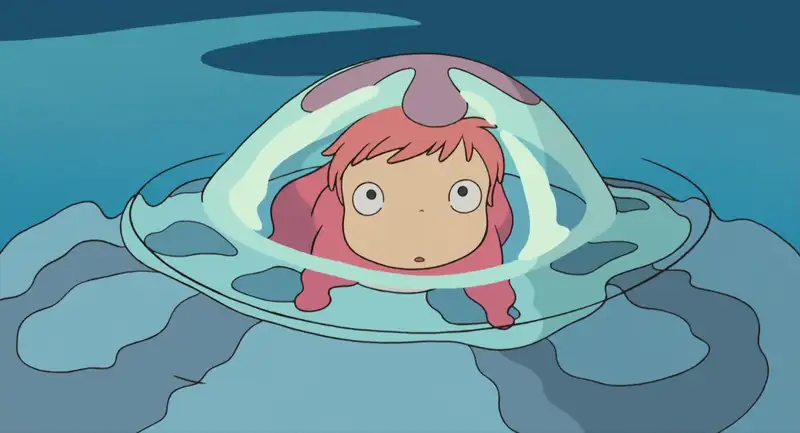
Ponyo, among Miyazaki’s more lighthearted works, signifies a notable transition from the “good” to the “great,” in my opinion. While the central premise is straightforward—a goldfish is transformed into a human girl and forms a friendship with a young boy from a fishing town—the film fully embraces its environmental theme, especially concerning the ocean. In the middle of the film, there’s a scene depicting a violent storm and the resulting tsunami at length, making it easily the best sequence of the film. The sheer power of the ocean waves is breathtakingly impressive, and paired with Ponyo’s playful nature during the sequence simply left me awestruck. Balancing tones of danger and lighthearted fun within the vast and often intimidating sea, Ponyo achieves a harmonious blend. However, its inherently youthful tone prevents it from reaching the pinnacle of Miyazaki’s other masterpieces.
5. Porco Rosso
Porco Rosso stands out as one of Miyazaki’s more overtly critical films on politics, particularly fascism. An ambiguous curse has transformed a World War I Italian fighter pilot into a pig—aptly dubbed as Porco Rosso (Shuichiro Moriyama). The film seamlessly blends an incredibly enjoyable viewing experience with profound impact. Infused with Ghibli fantasy, such as Rosso’s transformation into a pig, the film effortlessly creates a fun viewing experience while seamlessly integrating more hard-hitting ideas. The characters are easily relatable, and the plot is straightforward to follow, yet beneath the surface lies a subtly profound story with much more to unpack than initially meets the eye. Although, in my view, the ending extends a bit too long, the delightful characters and robust themes more than compensate, solidifying it as a cornerstone in Miyazaki’s filmography.
4. Kiki’s Delivery Service
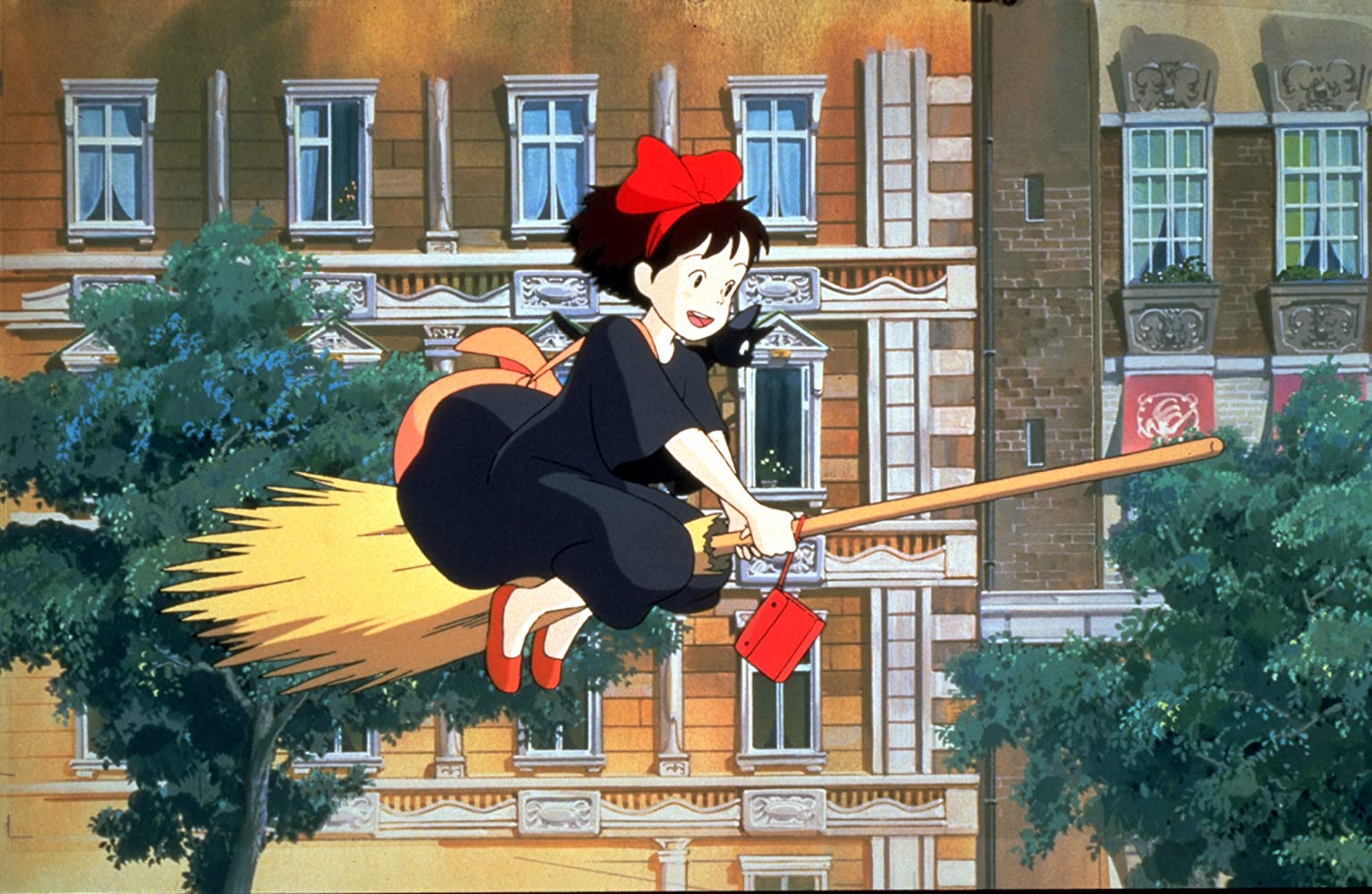
Kiki’s Delivery Service holds a special place as one of my personal favorite Ghibli movies (even inspiring the name of my cat, Jiji, after the character in this film). It stands out as a beautiful coming-of-age story crafted for younger audiences. Young witch Kiki (Minami Takayama) must move away from her hometown for a year to complete her training, and using her broom, starts a flying delivery service. With its enchanting blend of magic and witchcraft, the film serves as an accessible introduction for youngsters to the realities of adulthood, emphasizing the importance of a strong separation between work and pleasure. Kiki herself is a delightfully fun and easy-going character, accompanied by her familiar black cat Jiji (Rei Sakamura). The film offers a delightful and light-hearted viewing experience without compromising on storytelling or thematic depth. Like other Ghibli films I’ve mentioned, the only drawback might be a slight pacing issue before the climax, but overall, it doesn’t detract from the narrative.
3. My Neighbor Totoro
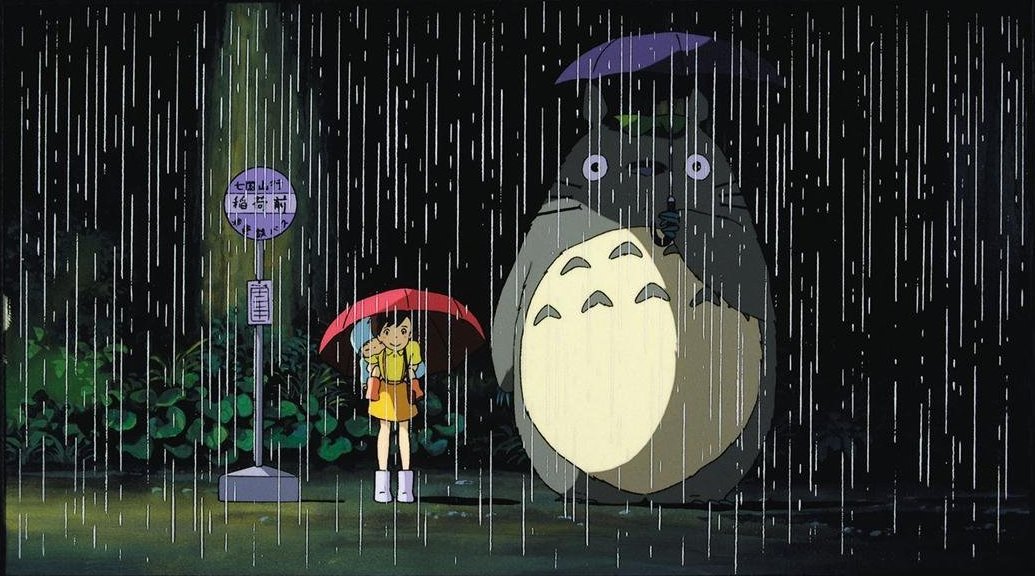
This film catapulted Miyazaki into the international spotlight, firmly establishing his impact and pivotal role in Studio Ghibli. There’s a reason Totoro is Ghibli’s mascot! Sisters Satsuki (Noriko Hidaka) and Mei (Chika Sakamoto) move to the countryside with their father and encounter a friendly wood spirit with whom they have many adventures, whom they dub as Totoro (Hitoshi Tagaki). My Neighbor Totoro addresses profound themes such as grief, loss, family, and childhood whimsy. It adeptly strikes a balance between these weighty concepts and the light-hearted nature typically associated with Ghibli films. Among the most enjoyable movies to watch, its climax is emotionally powerful, evoking tears and securing its place not only as one of Miyazaki’s most memorable but also as one of his best.
2. Princess Mononoke
Frequently hailed as one of Miyazaki’s finest, and rightfully so. Princess Mononoke is an epic film that follows the journey of Ashitaka (Yoji Matsuda), a young warrior cursed by a boar demon, as he becomes entangled in a conflict between industrial humans and nature gods, led by the enigmatic Princess Mononoke (Yuriko Ishida). The film adeptly confronts its environmental theme, delving into intricacies such as industrialization, poverty, and religion. While a hint of a love story is present, it harmoniously complements rather than overshadowing the narrative. Claiming the second spot on this list, Miyazaki’s enjoyable film is not without its challenges, particularly in a middle section grappling with slow pacing. Nevertheless, there’s one more film that stands as Miyazaki’s true masterpiece.
1. Spirited Away
There’s undoubtedly a reason why Spirited Away stands as the most emblematic film associated with Studio Ghibli and Hayao Miyazaki: it’s undeniably one of his best. Telling the enchanting story of Chihiro (Rumi Hiiragi), the film follows her journey as she’s trapped in a mysterious and magical world, as she navigates a surreal bathhouse and confronts various spirits and challenges to rescue her parents and discover her own resilience and courage. Miyazaki masterfully addresses themes such as capitalism, corporate greed, consumerism, and environmentalism seamlessly within the narrative. The protagonist, Chihiro, effortlessly captures the audience’s attention and serves as a perfect guide through the various themes, ideas, and predicaments presented in the film. This results in an incredibly subversive viewing experience, allowing viewers to easily absorb all that the film presents.
The Boy and the Heron was released in US theaters nationwide and IMAX on December 8, 2023, and in UK cinemas on December 26. Read our review of Earwig and the Witch.

